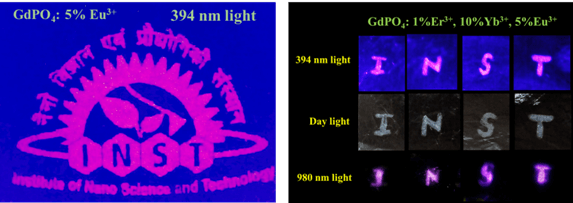New Delhi – Indian Scientist has developed a highly stable and non-toxic security ink from nano-materials that spontaneously emit luminescence due to its unique chemical properties.
The innovators at the Institute of Nano Science and Technology, Mohali believes that with the use of new non-toxic security ink even a common man would be able to find out easily whether the document or a product is original or fake. The new ink has huge potential to combat counterfeiting of branded goods, bank notes, medicine, certificates, currency.
“We have developed non-toxic metal phosphate-based ink with excitation dependant luminescent properties which are highly stable under practical conditions such as temperature, humidity, and light, etc. This work has been published in the journals ‘Crystal Growth and Design’ and ‘Materials Today Communications’,” Dr Sanyasinaidu Boddu the lead researcher said. If these materials are applied for anti-counterfeiting, it will give better encoding, decoding capacity and thereby improve the security ability, he added.
Most of the security inks available today are based on luminescent materials that absorb a high energy photon and emit low energy photon, technically called downshifting, where a covert tag is invisible under daylight, and it becomes visible under UV light. However, these single emission-based tags are prone to replication.
The new luminescent security ink developed by the researcher is based on lanthanide ions doped with nano-materials. These luminescent nanomaterials were synthesized via a simple co-precipitation method. A composite was made with these nanoparticles and commercially available PVC gold medium ink. The composite ink was used to print patterns and letters on black paper. The patterns of this ink under different excitation wavelengths were found to be stable against various conditions which may occur during practical applications.
Dr Boddu explains, “Trivalent lanthanide ions have very rich energy levels which help to exhibit both downshifting – absorbing a high energy photon and emit low energy photon and upconversion meaning absorb two low energy photon and emit a high energy photon with luminescent properties. Energy transfer between bismuth and lanthanide ions results in excitation dependent downshifting emission.”

Digital photograph of (left) INST logo printed with security ink under 394 nm UV light, (right) I, N, S, T letters written with security ink on black paper under 394 nm light, daylight, and 980 nm NIR light.












